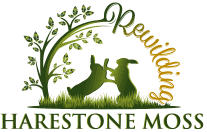The well being farm project
Harestone well being farm garden
Somebody once said that a weed is but an unloved flower, but in our garden everything will be loved!
In our one acre well-being farm garden we will hope to host the remedies to many ailments for health and well being. Re-connecting with the tradition of medicinal planting, broaden our knowledge and hopefully let mother nature do what she does best!
All modern medicine, no matter how complex evolved from medical botany, and physic gardens. This is an undeniable fact, and until the 17th Century herbs were the main ingredients of medicine. Since those times, and like so many other traditions, they have been replaced by synthetic products, so how cool would it be if we could revert back to more traditional methods, where many minor ailments can be helped using common garden herbs instead?
Created in a space of calm, reflection and beauty and to be able to wander round the garden reading the information of the benefits of each plant, or simply relax on the benches absorbing the views and aromatics. Every growing item will have a documented medicinal, beauty or aromatherapy purpose. Herbal and medicinal plants have over millennia mastered every survival skill except how to grow in neat rows, so the chaotic wilderness is as natural as the plants themselves.
Our well being farm garden will begin at the start of 2023 with research into herbs and other plants completed to allow us to establish a wide variety of growth with it. With the majority being native Scottish plants, we are aiming to create a space that anybody can try themselves. As the garden expands we learn more about herbal gardening and remedies, we’ll add to it, so join us on this journey into years past and the rediscovery of nature’s natural dispensary.
WHERE WILD THINGS HAPPEN
Be part of the tribe, grab our FREE - how to rewild on a small scale guide, and start your own wild plan !
Well being farm garden
We have selected a sheltered one acre plot with a babbling brook running alongside to house our medicine garden. Bordered by crab apple and dog rose hedges, our garden is now a temporary home to our 3 male Duroc pigs. They have been busy rooting the area over winter(as well as fertilising it as they go) in preparation for planting in the spring. Unsurprisingly using pigs to cultivate dates back 8000 years, so just as they did then and with no written instructions they are doing a wonderful job and are our great helpers on the farm! Its amazing what they can achieve in such a short space of time when your butts in the air and your snout’s in the soil.
When completed we want this to be a lovely sanctuary where you can remove yourself from everyday life and fully enjoy the space. Like our rewilding project as a whole, we believe that spending time outdoors in nature is one of the best remedies for health and well being, so where better to start this journey other than the centre of a herbal explosion.
Medicinal Garden plants and herbs
Here is a little selection of the plants/herbs we will lovingly grow from seed and the healing benefits to the body and mind. Scotland do an amazing job in educating and provided resources.
Chamomile
BENEFITS
Peppermint
BENEFITS
(peppermint oil topically)
